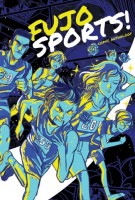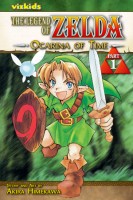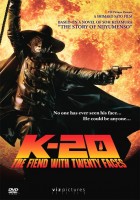My News and Reviews
Last week was a slower week at Experiments in Manga, which is just as well because I spent a long weekend with my family in Ohio for my youngest sister’s high school graduation. I was pretty busy with things there, but I was still able to post a few things here. The most recent manga giveaway, for example. There are still a couple of days left to enter for a chance to win Oishinbo, A la Carte: Japanese Cuisine, too. All you have to do is tell me a little about your favorite food manga (if you have one). May’s Bookshelf Overload was also posted. Interestingly enough, I think I actually bought more comics last month than manga. (I largely blame TCAF for that.) As for reviews, I took a look at Yoshikazu Yasuhiko’s Mobile Suit Gundam: The Origin, Volume 5: Char & Sayla. Char happens to be one of my favorite Gundam characters, so it probably shouldn’t be too surprising that this volume is one of my favorites in the series thus far.
There were a few things that I found to read online last week that were particularly interesting, too: Manga Therapy is writing and hosting a series of posts for Mental Health Month, including Lauren Orsini’s article about Mushishi as a metaphor for mental illness. FanboyNation had an interview with Tokyopop. Brigid Alverson interviewed Akira Himekawa for Comic Book Resources. And finally, Revealing and Concealing Identities: Cross-Dressing in Anime and Manga, Part 3 was posted at The Lobster Dance. I’m sure there were plenty of other interesting articles and new to be found last week, but as I mentioned I was rather occupied with traveling, helping out at home, and visiting with family. If I missed anything major, please do let me know!
Quick Takes
 Fujosports! by Various. The most recent anthology from the Love Love Hill collective, Fujosports! collects six sports-themed comics with a female-gaze. These aren’t necessarily the sports you might be expecting, though: logging competitions, roller derby, free-form rollerblading, Turkish oil wrestling, field hockey, and competitive dodge-ball. All of the stories tend to be generally upbeat and optimistic, but the artists’ styles are distinct. As might be expected from the “fujo” in the title, the anthology includes a bit of bromance and boys’ love potential, but there’s some girls’ love, too, and plenty of general team bonding. Each comic is followed by a short freetalk by the creators, which is a very nice addition and makes the stories even more personable Fujosports! is a cute, sweet, and humorous collection. Every contribution in the anthology left me with I huge grin on my face, or at least a smile. Simply put, Fujosports! is a lot of fun; I’m really glad that I picked it up.
Fujosports! by Various. The most recent anthology from the Love Love Hill collective, Fujosports! collects six sports-themed comics with a female-gaze. These aren’t necessarily the sports you might be expecting, though: logging competitions, roller derby, free-form rollerblading, Turkish oil wrestling, field hockey, and competitive dodge-ball. All of the stories tend to be generally upbeat and optimistic, but the artists’ styles are distinct. As might be expected from the “fujo” in the title, the anthology includes a bit of bromance and boys’ love potential, but there’s some girls’ love, too, and plenty of general team bonding. Each comic is followed by a short freetalk by the creators, which is a very nice addition and makes the stories even more personable Fujosports! is a cute, sweet, and humorous collection. Every contribution in the anthology left me with I huge grin on my face, or at least a smile. Simply put, Fujosports! is a lot of fun; I’m really glad that I picked it up.
 Gangsta, Volume 2 by Kohske. I enjoyed the first volume of Gangsta so much that I immediately went out and preordered the second. The series is quickly becoming one of my favorite manga currently being released. Gangsta has plenty of action in addition to a wide range of interesting characters (both women and men, young and old), many of whom have dark, tragic pasts. More characters are introduced in the second volume, some of them even manage to survive to the end of it, and the larger, overarching plot continues to develop. The Three Laws binding the Twilights (should they actually choose to follow them) are directly lifted from Asimov’s Three Laws of Robotics, nearly word-for-word. While this certainly emphasizes the inhuman characteristics of the Twilights, I did find it to be an odd choice. Still, the Three Laws provide excellent narrative frameworks for robot and android stories, so I’m willing to reserve my judgement and wait to see how Kohske uses them Gangsta.
Gangsta, Volume 2 by Kohske. I enjoyed the first volume of Gangsta so much that I immediately went out and preordered the second. The series is quickly becoming one of my favorite manga currently being released. Gangsta has plenty of action in addition to a wide range of interesting characters (both women and men, young and old), many of whom have dark, tragic pasts. More characters are introduced in the second volume, some of them even manage to survive to the end of it, and the larger, overarching plot continues to develop. The Three Laws binding the Twilights (should they actually choose to follow them) are directly lifted from Asimov’s Three Laws of Robotics, nearly word-for-word. While this certainly emphasizes the inhuman characteristics of the Twilights, I did find it to be an odd choice. Still, the Three Laws provide excellent narrative frameworks for robot and android stories, so I’m willing to reserve my judgement and wait to see how Kohske uses them Gangsta.
 The Legend of Zelda: Ocarina of Time, Volumes 1-2 by Akira Himekawa. After meeting Akira Himekawa at TCAF, I realized that although I was familiar with some of their work, I hadn’t actually read much of their manga. Granted, only The Legend of Zelda has been licensed for print release in English so far. I actually happen to be a fan of the Zelda video games, so I wasn’t surprised that I’m enjoying the manga series, too. Ocarina of Time was the game which inspired Himekawa to pursue The Legend of Zelda manga. The Ocarina of Time manga is accessible even to those who haven’t played the game, but those who have will be able to appreciate the nods to the original more. The manga follows the same basic plot as the video game, though Himekawa adds a few touches of their own. The Ocarina of Time manga is definitely an adventure story aimed at younger readers, there’s more action than there is nuanced character or plot development, but it’s fun.
The Legend of Zelda: Ocarina of Time, Volumes 1-2 by Akira Himekawa. After meeting Akira Himekawa at TCAF, I realized that although I was familiar with some of their work, I hadn’t actually read much of their manga. Granted, only The Legend of Zelda has been licensed for print release in English so far. I actually happen to be a fan of the Zelda video games, so I wasn’t surprised that I’m enjoying the manga series, too. Ocarina of Time was the game which inspired Himekawa to pursue The Legend of Zelda manga. The Ocarina of Time manga is accessible even to those who haven’t played the game, but those who have will be able to appreciate the nods to the original more. The manga follows the same basic plot as the video game, though Himekawa adds a few touches of their own. The Ocarina of Time manga is definitely an adventure story aimed at younger readers, there’s more action than there is nuanced character or plot development, but it’s fun.
 K-20: The Fiend with Twenty Faces directed by Shimako Satō. K-20 is a live-action film based on the novels of Soh Kitamura (which sadly haven’t been translated into English) which were in turn inspired by the works and characters of Edogawa Rampo, specifically his famous detective Akechi Kogorō and his nemesis “Twenty Faces.” Akechi’s young assistant Kobayashi also has a role to play. It was because of this Rampo connection that I decided to watch the film in the first place, but even those unfamiliar with the references will be able to enjoy the movie. Packed with action and stunts, a little bit of romance, a great cast, and a large dose of humor, K-20 was extremely entertaining. The film is set in the late 1940s in an alternate history in which the Second World War was never fought but in which a strict hierarchical class structure is enforced. The story follows Endo Heikichi, an acrobat who is arrested for being the master thief K-20 after being set up, and his attempts to prove his innocence, basically by becoming as skilled as K-20 himself.
K-20: The Fiend with Twenty Faces directed by Shimako Satō. K-20 is a live-action film based on the novels of Soh Kitamura (which sadly haven’t been translated into English) which were in turn inspired by the works and characters of Edogawa Rampo, specifically his famous detective Akechi Kogorō and his nemesis “Twenty Faces.” Akechi’s young assistant Kobayashi also has a role to play. It was because of this Rampo connection that I decided to watch the film in the first place, but even those unfamiliar with the references will be able to enjoy the movie. Packed with action and stunts, a little bit of romance, a great cast, and a large dose of humor, K-20 was extremely entertaining. The film is set in the late 1940s in an alternate history in which the Second World War was never fought but in which a strict hierarchical class structure is enforced. The story follows Endo Heikichi, an acrobat who is arrested for being the master thief K-20 after being set up, and his attempts to prove his innocence, basically by becoming as skilled as K-20 himself.

Speak Your Mind